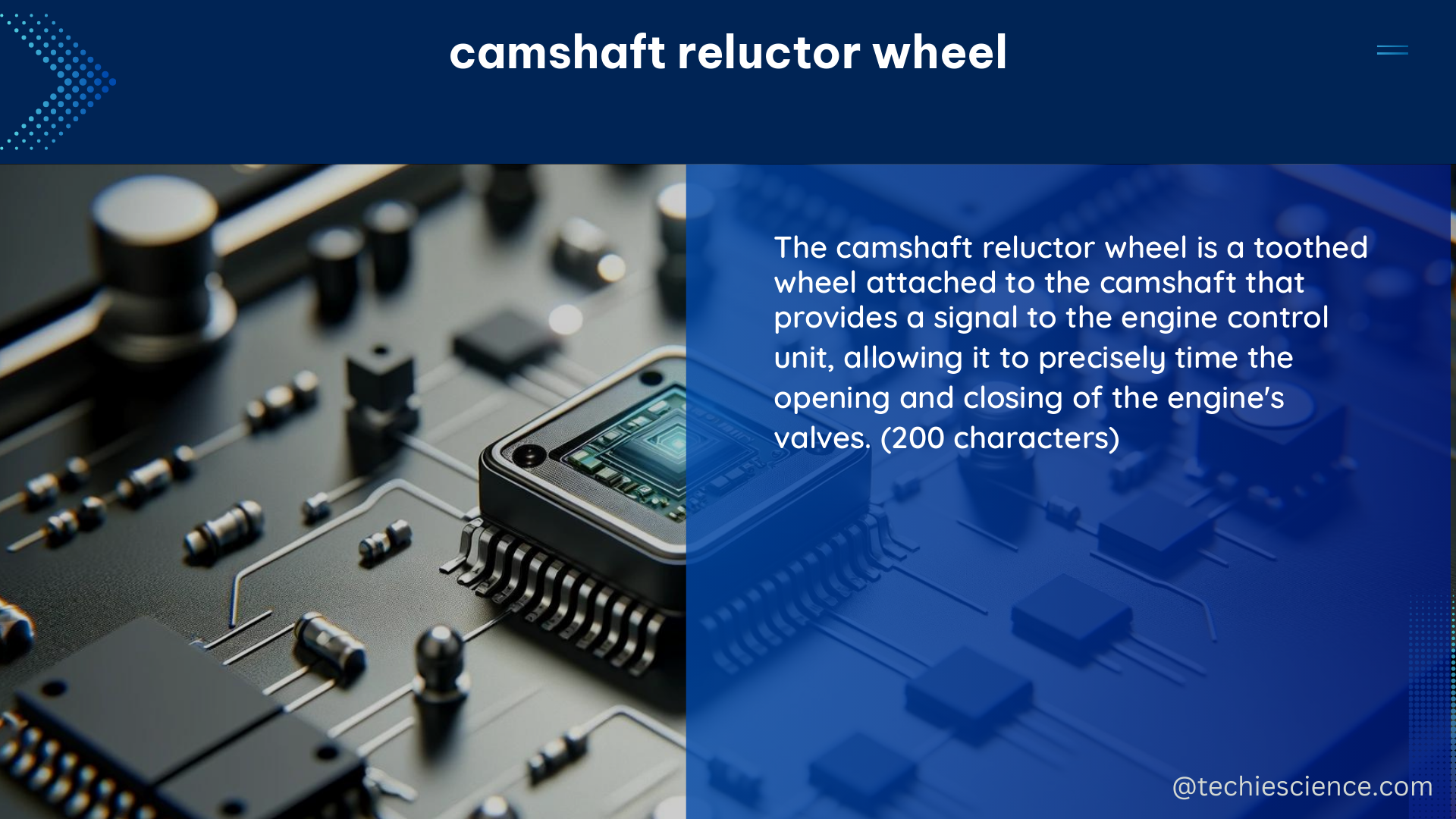The camshaft reluctor wheel is a critical component in an engine’s ignition system, responsible for providing the engine control unit (ECU) with precise information about the camshaft’s position and rotation. This data is essential for the proper timing and synchronization of the engine’s valves, fuel injection, and ignition events. Accurate measurements and understanding of the reluctor wheel’s specifications are crucial for ensuring optimal engine performance and preventing potential issues.
Runout Measurement and Tolerance
One of the most critical measurements for a camshaft reluctor wheel is its runout, which refers to the amount of wobble or deviation from a perfect circular motion. Excessive runout can cause inconsistent sensor signals, leading to various problems, such as misfiring, rough idling, and even engine damage.
According to the search results, a user measured the overall runout of a 24x reluctor wheel just below the teeth and found it to have about 0.024 inches (0.61 mm) of runout. This measurement is significant because it exceeds the manufacturer’s stated tolerance of 0.010 inches (0.25 mm), indicating a potential issue with the wheel.
The search results also reveal that the tolerance for runout can vary between manufacturers. For example, General Motors (GM) states a maximum runout of 0.010 inches (0.25 mm), while some aftermarket crank manufacturers claim that sensors can operate with up to 0.040 inches (1.02 mm) of runout. This discrepancy highlights the importance of understanding the specific specifications for the reluctor wheel being used and ensuring that it meets the sensor’s requirements.
Magnetic Properties and Sensor Compatibility

In addition to runout, the magnetic properties of the camshaft reluctor wheel can also impact the engine’s performance. The search results indicate that a magnetoresistive sensor (MRS) may intermittently not pull to ground, causing a missing pulse in the waveform. This issue can result in the engine requiring a new camshaft, emphasizing the importance of ensuring the reluctor wheel’s magnetic properties are within the manufacturer’s specifications.
To ensure proper sensor compatibility, it’s essential to verify that the reluctor wheel’s magnetic properties, such as the strength and polarity of the magnetic fields, are compatible with the specific sensor being used. Manufacturers often provide detailed specifications and recommendations for the appropriate reluctor wheel and sensor combinations.
Tooth Condition and Wear
The search results also reveal that the physical condition of the reluctor wheel’s teeth can impact its performance. In the example provided, several teeth were found to be bent or “laid over,” suggesting a problem with the wheel’s manufacturing or assembly.
Regularly inspecting the reluctor wheel for any signs of wear, damage, or deformation is crucial. Bent or damaged teeth can cause inconsistent sensor signals, leading to various engine performance issues. If any issues are identified, it’s recommended to replace the reluctor wheel to ensure reliable and accurate camshaft position sensing.
Reluctor Wheel Replacement and Calibration
When replacing a camshaft reluctor wheel, it’s essential to ensure that the new component meets the manufacturer’s specifications and is properly installed. This may involve aligning the wheel with the camshaft, ensuring the correct number of teeth, and verifying the magnetic properties.
In some cases, the engine’s ECU may need to be recalibrated or reprogrammed to recognize the new reluctor wheel. This process can vary depending on the vehicle make, model, and engine management system, so it’s important to consult the manufacturer’s instructions or seek the assistance of a qualified technician.
Conclusion
The camshaft reluctor wheel is a critical component in an engine’s ignition system, and its specifications can significantly impact the engine’s performance. Accurate measurements and understanding of the reluctor wheel’s runout, tolerance, magnetic properties, and physical condition are essential for ensuring optimal engine performance and preventing potential issues.
By following the guidelines and recommendations outlined in this comprehensive guide, you can ensure that your camshaft reluctor wheel is functioning correctly and contributing to the overall health and efficiency of your engine.
References:
- Timing Chain Change and Phaser First Mechanic
- 24x Reluctor Wheel Issues
- Magnetoresistive Sensor (MRS) Issues

The lambdageeks.com Core SME Team is a group of experienced subject matter experts from diverse scientific and technical fields including Physics, Chemistry, Technology,Electronics & Electrical Engineering, Automotive, Mechanical Engineering. Our team collaborates to create high-quality, well-researched articles on a wide range of science and technology topics for the lambdageeks.com website.
All Our Senior SME are having more than 7 Years of experience in the respective fields . They are either Working Industry Professionals or assocaited With different Universities. Refer Our Authors Page to get to know About our Core SMEs.